Everything You Need to Know About a Server Room
Today, most big businesses need powerful servers to store and process data related to their software and online services. As the sensitivity and volume of this data increase, these servers need more security and protection. This is where the idea of creating a server room for more accurate maintenance and control of servers and related equipment becomes essential.
A server room houses data storage servers and computer network devices. It is the heart of an organization or company, so when designing it, you should consider factors such as network connections and electricity, room temperature and humidity, and suitable protection against fire and earthquakes.
Considering the use and location of the server room, you may think that this is the same data center we encounter when buying a virtual server. Although server rooms and data centers are similar, they are different in terms of location and usage. The data center stores and maintains a large number of physical servers and network equipment, which users can access remotely and virtually. Still, the server room is located in your organizational department and is under your control and management locally.
So far, you have learned the basics of the use and function of the server room, but the matter does not end there. There are many standards and tips that you need to know to set up an ideal server room, and we will try to cover them all in this article so that you can get off to a strong start using the tips provided:
What is a Server Room?
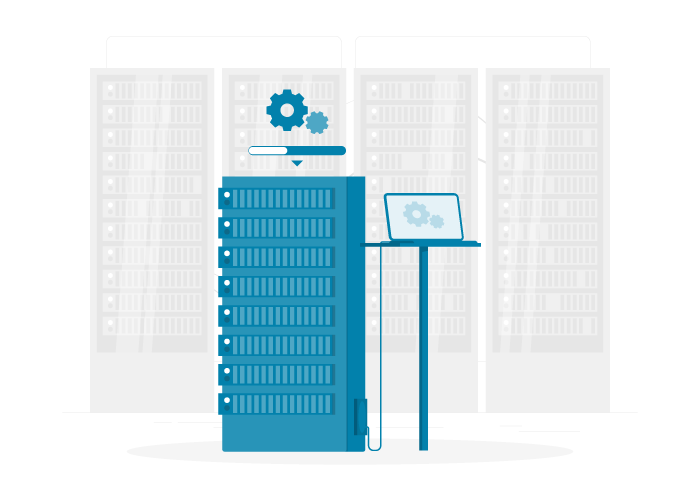
Any online business that deals with data and online requests needs a server to store and process the data. As the volume of data and information increases, the need for more servers to control and manage it becomes apparent. The high sensitivity of data and server processing operations makes it seem unwise to rely on a normal environment to maintain servers.
Servers and equipment that host sensitive data and perform critical processing operations need an isolated and secure environment that meets all the necessary standards to protect servers and their data.
This is where the server room or server room comes into play.
A server room is a space used by a company or organization to maintain servers and other network equipment. The servers located in this room have important processing components such as CPU, RAM, and hard drive, but they do not have screens or input devices. Of course, there is no need for them because all these servers together form a server network and have a single purpose. For this reason, they can all be managed using a server manager system available outside the room.
This server room is the heart and core of the organization, and the servers and equipment in it need special conditions and features to perform at the high performance and efficiency necessary to process data and requests.
In the following, we will talk in detail about the requirements and standards of setting up a server room; until now, you should know that your business has reached a point where its data and processing operations require high accuracy and security. , minimizing downtime and optimizing energy consumption has become your priority, and you like to control and manage the performance of the backbone of the company’s IT department well, it’s time to set up your server room and start protecting and upgrading.
The Main Parts of a server room
The server room is not ordinary. This space is supposed to maintain servers that are responsible for storing important data and processing all kinds of requests, so it needs special components, the main ones of which are mentioned below:
Hardware section
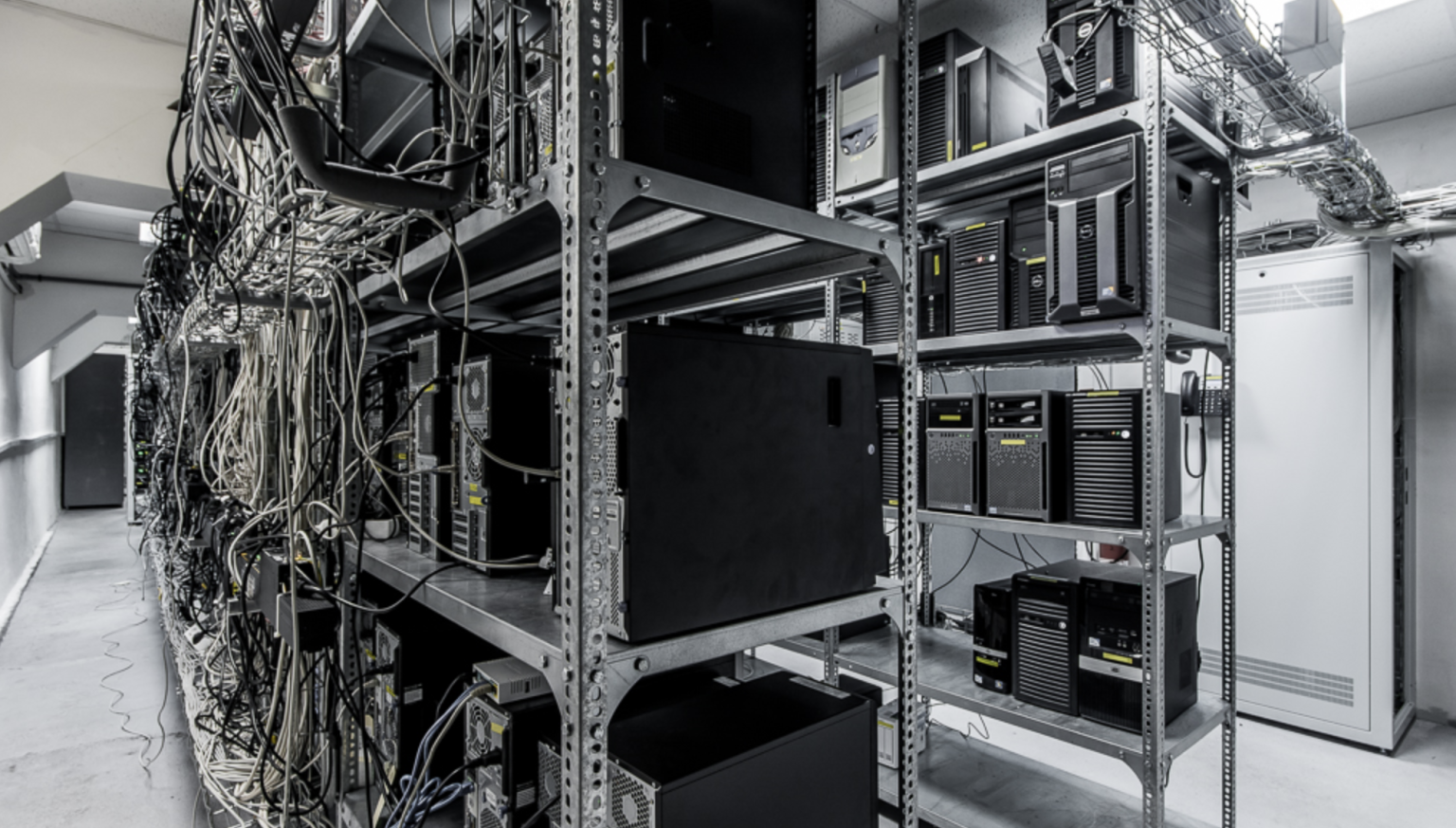
This room is supposed to maintain servers and network hardware equipment, so the most important part of it is this hardware part. Computing components, or servers, are key hardware devices that carry out various responsibilities such as network control, file sharing, email hosting, database access, or website hosting. As it is clear from the name of the server room, the servers are the main role of this server room, but there are other equipment that are used to maintain the servers’ performance and establish communication between them.
Storage devices such as HDD and SSD drives are another component of the hardware department that are responsible for the central storage of the entire organization’s data and by providing backup information and data, it is possible to recover data in case of failure or loss. To provide information.
Network equipment, such as routers, switches, and hardware firewalls, regulates network traffic and provides the necessary conditions for secure connections between servers inside the room and the outside environment.
server rack room
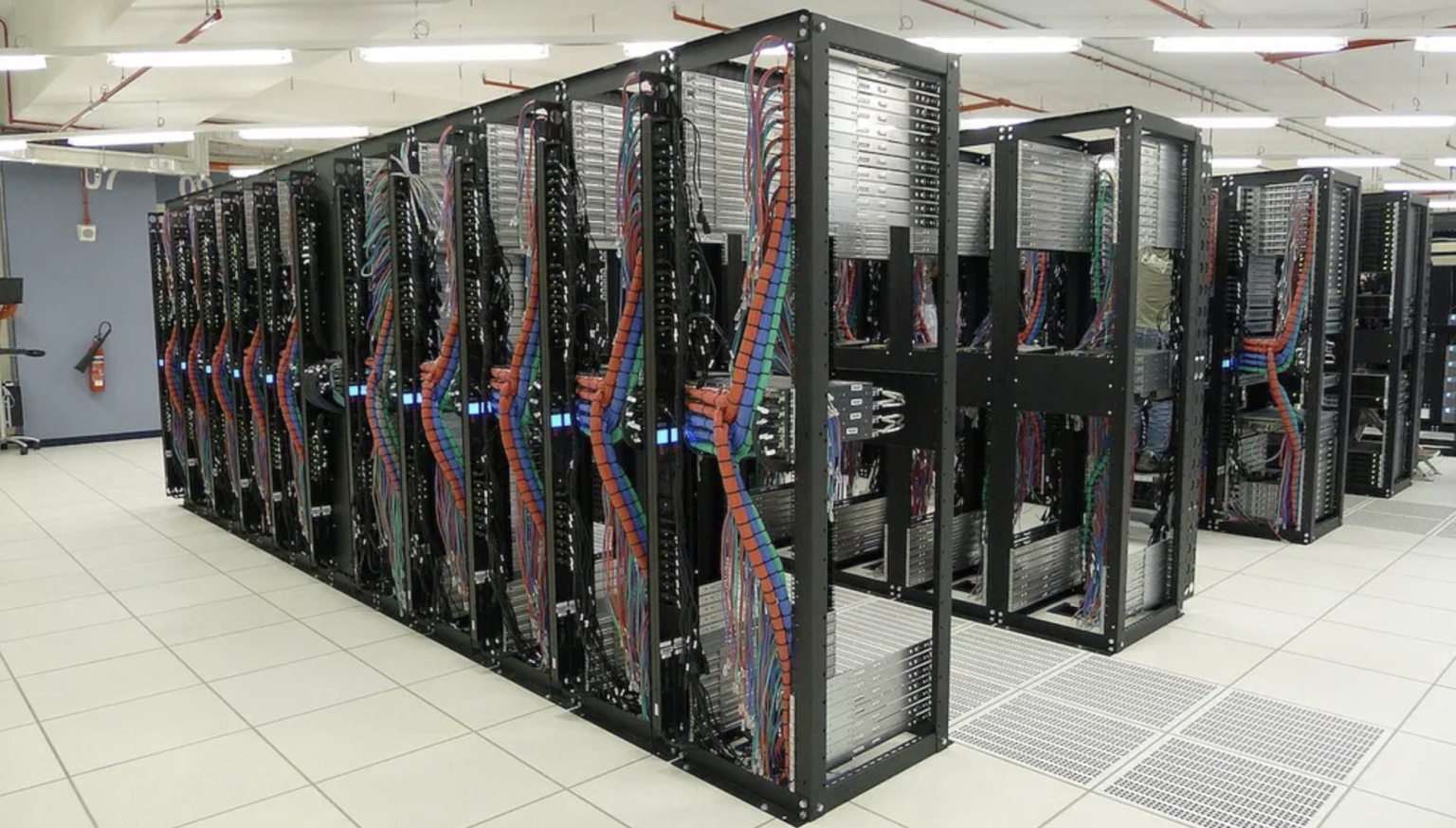
Servers and other server room equipment need a durable enclosure to prevent damage in the event of an impact, fall, fire, or other incident. The rack is the same shelf or physical enclosure that maintains the server room’s hardware equipment. Of course, when choosing and installing racks, you should follow the principles and standards, which we discuss in detail in the server room design tips section.
Cables
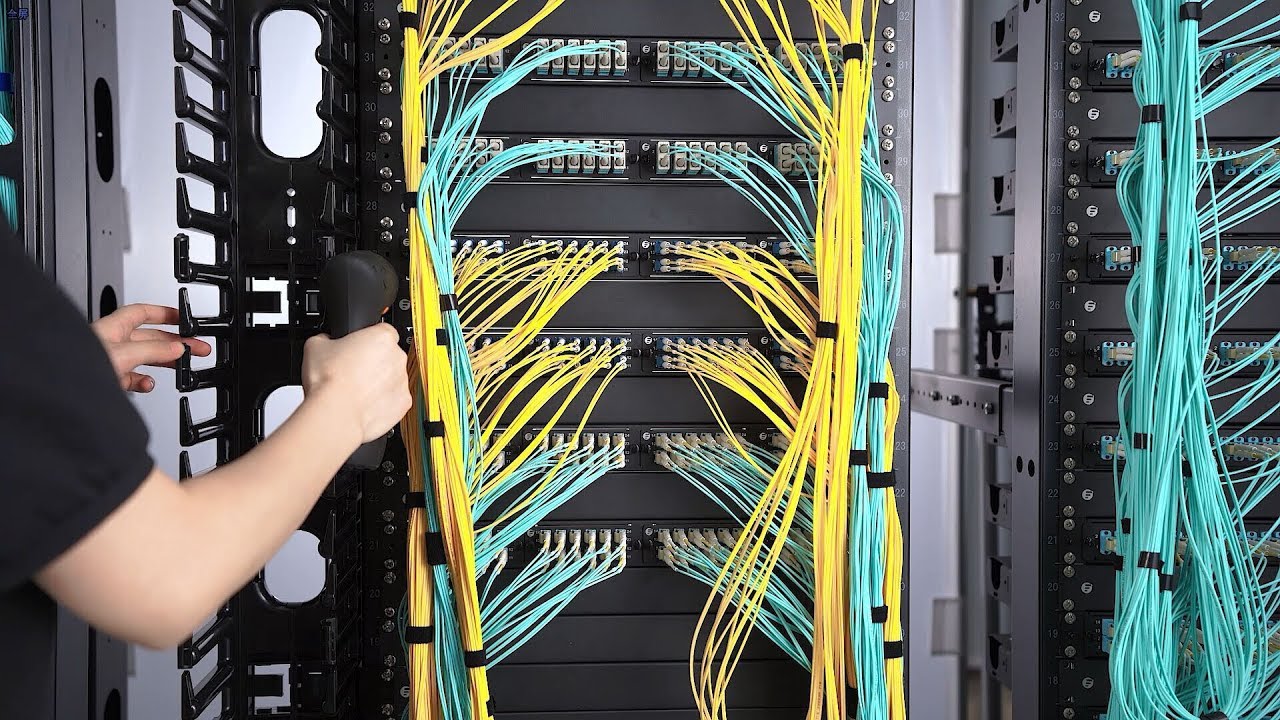
Connections of various server room equipment are established with the power source and also with each other through cables. In general, in the server room, all kinds of cables are used, such as power interface, Ethernet, patch, etc., with different lengths, which if you do not proceed with the selection and wiring process in a principled and intelligent way, you will end up with a crowded image of the wire. You will encounter complicated problems that will probably interfere with the optimal performance of the server room.
Power source

The equipment and servers you put inside the rack do not work until they are connected to electricity. Other equipment, such as coolers, also needs a power source to regulate the temperature of the server room. That’s why you should have enough (even extra) power sources so that you don’t get into trouble in case of power fluctuations or a malfunction in one of them.
UPS
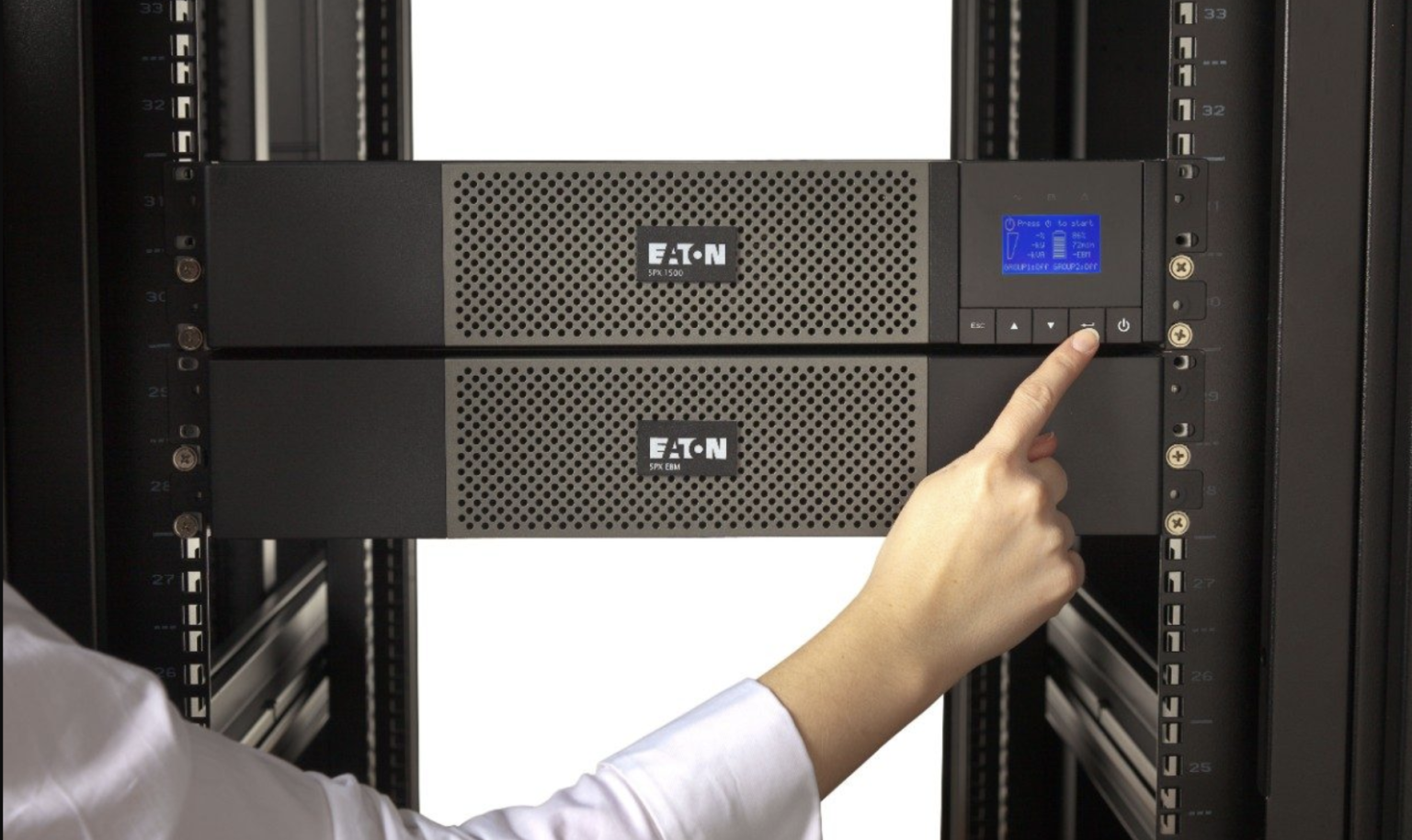
Servers and equipment in the server room should have stable performance and power outages or power fluctuations should not have a negative impact on their performance. For this reason, UPS is one of the main parts of the server room. The UPS is responsible for providing stable power and when the power fails, it immediately and without interruption provides its battery charge under the form of stable power so that the server room equipment can continue to work. Protecting equipment against power fluctuations, providing enough time for servers to shut down without losing data, managing and monitoring the power status and energy load, etc. are among the most important reasons for using UPS in the server room.
Ventilation and cooling system

Server room cooling system
Servers and equipment connected to the power source generate heat in exchange for energy consumption, and an increase in temperature inside the server room can damage the equipment. Therefore, ventilation, cooling, and temperature regulation systems inside the room are necessary to create a stable environment and maintain the performance of server and network equipment.
Fire prevention systems
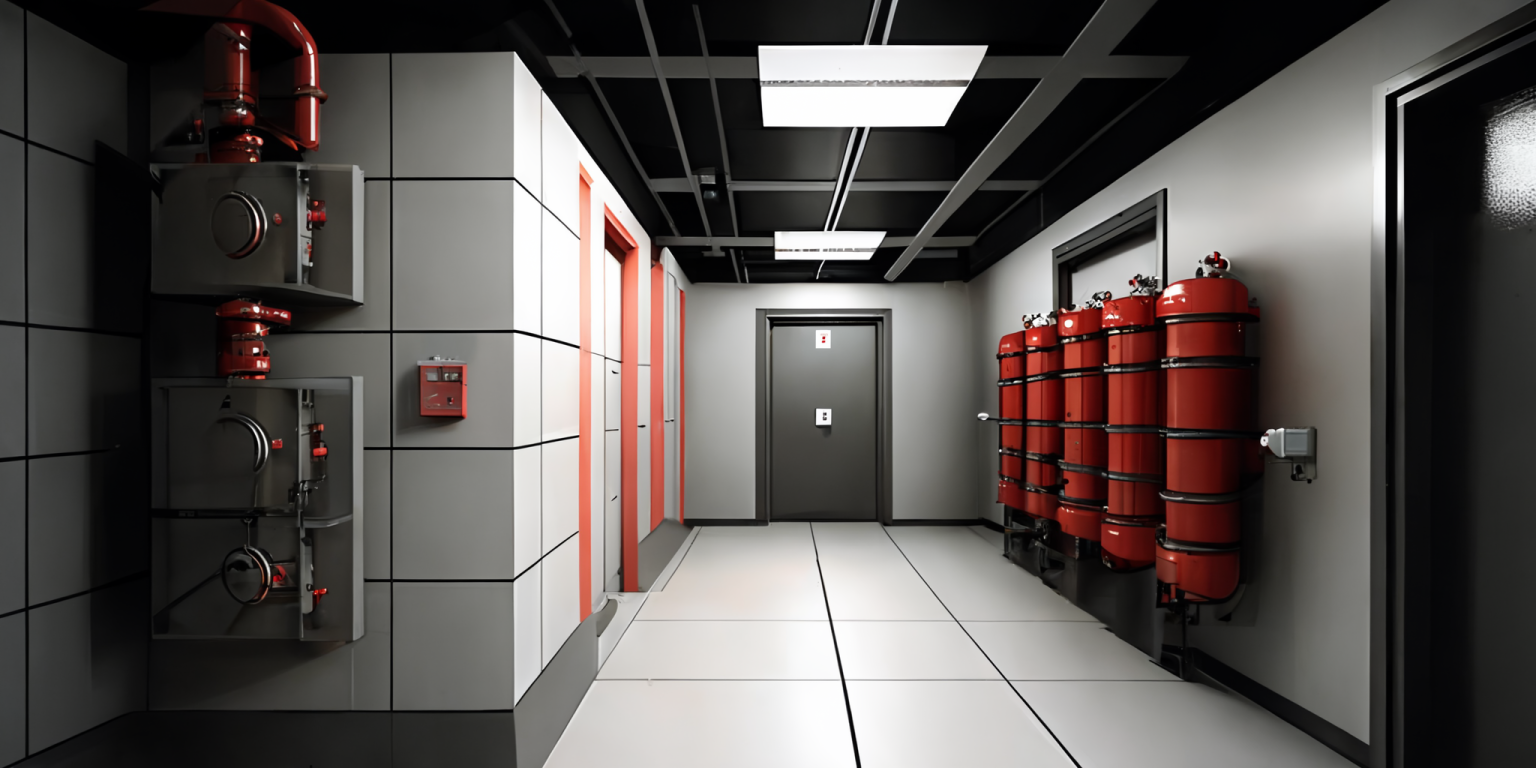
Fire prevention system
Excessive heat from equipment, incorrect cable connections, failure of power cables, problems in the ventilation system, and other factors can cause a fire in the server room. To protect this room, which is the core of the organization, you should consider setting up fire extinguishing systems and smoke and fire detection sensors.
So far, you have learned about the equipment and main parts of the server room, but the building part, such as the walls and the floor, also needs a series of specifications, which we will mention below.
Important tips for designing an ideal server room
In order to have a server room with high performance and efficiency, you must design it based on a series of principles. In this section, we separate the important points for setting up the server room based on its different sections. Let’s get started:
The interior of the room
- The room’s structure should provide enough space for cables, ventilation systems, servers, and network equipment.
- The room should be large enough to allow easy movement between them and to accommodate the equipment.
- The height of the server room should be such that it does not cause problems to transfer the equipment.
- The walls and floor of the room must be heat insulated so that the heat of the equipment is properly controlled and does not transfer to the surrounding and lower surfaces.
- The walls and floor of the room must be sound-insulated to reduce environmental sounds and noises, and the sounds caused by the equipment and operations inside the room are not transferred to the outside.
- The walls and floors of the server room must also be constructed using waterproof materials.
Sunlight can raise the temperature of the server room, so try to use a windowless room where the temperature can be controlled or implement the necessary solutions to control and ventilate the air. - High activity and heat is one of the requirements of the server room, and for this reason, it is necessary to use fire-resistant materials and fireproof coatings to prevent the spread of fire.
- It is a good idea to create a false floor and ceiling to allow the passage of fire extinguishing pipes and power and network cables.
- Using security doors with advanced locking systems, digital locks, or card keys is a correct and completely appropriate security measure.
- The amount of lighting in the room also increases its temperature, so try to set the lighting system so that it is turned off when leaving the room and does not generate excess heat.
Storage boxes and racks for equipment
- The standard size for racks and racks for storing equipment and servers in a server room is 42U high and 19 inches wide.
- Racks and cabinets for storing equipment are available in various designs, from simple to advanced, and offer various features. Identifying your needs is the first step in choosing a suitable rack.
- A rack must be equipped with a proper cable management system to prevent damage and any tangle of cables related to the equipment in the rack.
- The presence of ventilation systems and internal fans in the rack helps to better control the temperature inside.
- A rack should be off the floor to prevent air flow from raising the temperature of the servers.
- Each of the racks in the server room needs regular care and cleaning because damage caused by dust can cause problems in the operation of the server room equipment.
- Installing and using PDU is a good idea to distribute power to various rack equipment and manage energy consumption optimally.
- The necessary accessories for a rack include the cooling fan, electrical outlets, movable and fixed tray, thermometer, rack door lock, and lighting section.
Power supply
- Servers and other server room equipment require a constant power supply to provide proper and stable performance.
- To deal with outages and power fluctuations, you should consider setting up a secondary power source, such as a UPS and generator.
- The electrical panel, which contains switches, control parts, and sections showing voltage, current, power, etc., is one of the most essential parts of the server room, which requires accurate and optimal design.
- It is a good idea to install ATS equipment to automatically transfer between the primary and secondary switching sources.
- If you are concerned about the excess electrical current of electrical equipment and you want to protect the users and equipment in the room against this current, you should definitely think of setting up an earthing system or ground harness to transfer this excess current to the ground.
- Maintaining the same voltage between two or more parts of electrical systems is a great idea to maintain the same voltage between them, and if you want to avoid dangerous voltages and electromagnetic interference in the server room, you should definitely think about setting up a bonding system.
- The electricity in the server room must be active 24 hours a day, so it is logical to create a separate electrical room with equipment such as power cables, an emergency power or generator, a switchboard, and a UPS.
- Controlling and monitoring electricity consumption is one of the most necessary tasks to maintain the stability and optimal performance of the server room, so it is a good idea to consider using smart PDUs, sensors, and monitoring software.
Cable and wiring
- Improper installation of cables can cause disorder in the server room, difficulty in the process of repairing and replacing cables, and tearing of cables, resulting in a decrease in server performance.
- You must ensure the correct and safe connection of the cables to the equipment and the power source to avoid interference and equipment outages.
- Electromagnetic interference between the cables can damage the stability and performance of the cables, for this reason, you must proceed in a principled way when laying cables and consider the location of bends and different angles.
- For the passage of network and power cables, channels with suitable caps, trays, and ladders must be used.
- You can use colored adhesive tapes to keep the cables in one place and away from other cables.
- Installing eyelets on the back of shelves or racks creates a small port for the cables to pass through, which helps keep the cables in place.
- If you need to group the cables, you can use zip ties to prevent them from slipping.
- When installing cables, use equipment that is flexible and supports the ability to increase the size or number of cables.
Peripheral equipment of the server room
- High temperatures, the possibility of connecting electrical cables, and the failure or oldness of the equipment in the server room are among the most common causes of fire. For this reason, you must use a chemical-based fire extinguishing system (not water).
- Using a suitable and powerful cooling system is one of the most necessary things to maintain a suitable room temperature (10 to 27 degrees) and prevent fire.
- Dust and high humidity can cause premature failure or an increase in room temperature. For this reason, you should definitely consider installing a suitable air conditioning system or control sensors.
- Using fireproof paint for the server room is essential to prevent fire and damage to the server room equipment.
- Using control sensors and surveillance cameras to continuously monitor and control the state of the server room is a great idea to keep it safe.
- Transfer panels on the rack’s floor and walls help to access and move the equipment more easily.
- The server room is the main part of your organization, so you should definitely consider installing an access system and traffic registration, such as fingerprint registration or entering a special password, so that only authorized people can access it.
In general, the importance of the server room in large organizations is quite clear. If you can fully follow these principles and set up a high-performance secure server room and make it a regular management and monitoring agenda, you will surely see the desired performance of the server room and the equipment in it.
Conclusion
The server room is the most important and main part of large organizations, the design and management of which requires a series of special principles that you learned in this article. In general, try to be very careful and sensitive when choosing server room equipment so that after setting up the server room and complying with all the principles of the standards, you will not face problems due to the low efficiency of servers and equipment. A proper and optimized server room allows you to boost your business performance and take control of the situation.

